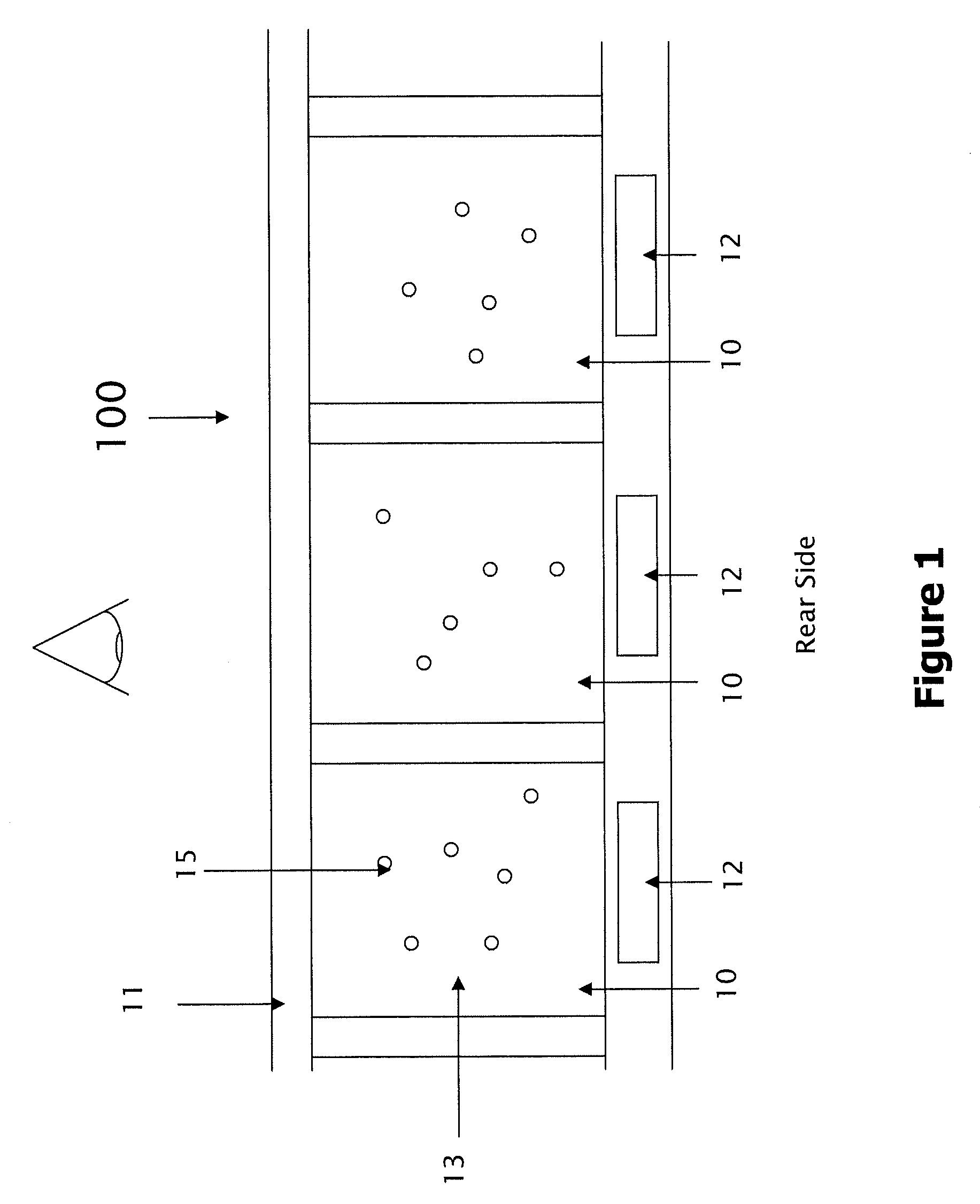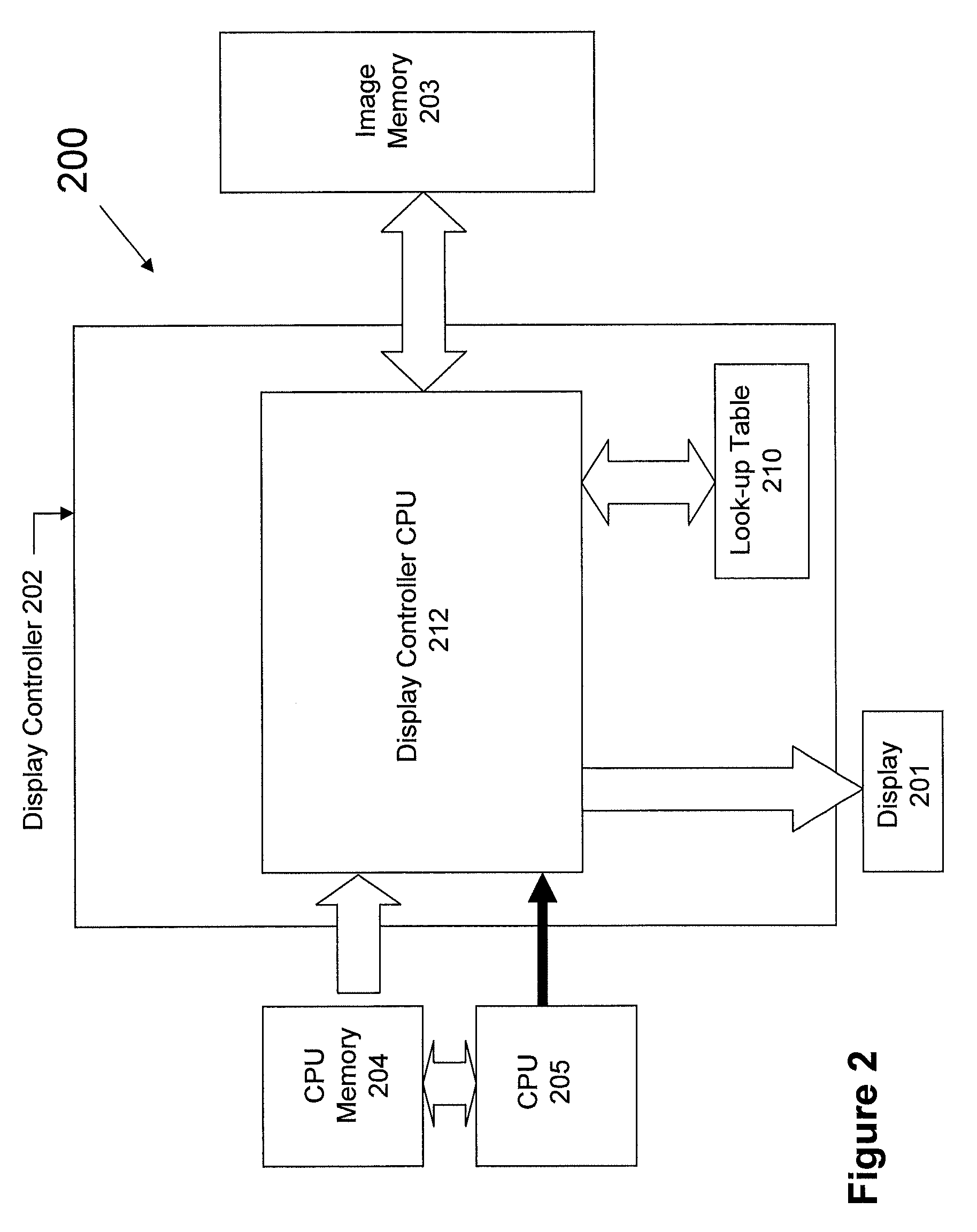Driving methods for electrophoretic displays
a technology of electrophoretic display and driving method, which is applied in the direction of electric digital data processing, instruments, computing, etc., can solve the problems of particularly undesirable current method, and achieve the effect of preventing overdriving of electrophoretic display and highest speed
- Summary
- Abstract
- Description
- Claims
- Application Information
AI Technical Summary
Benefits of technology
Problems solved by technology
Method used
Image
Examples
example 1
Pixel Counter Table
[0085]This example is shown in FIG. 7. The current image has pixels A and B in the black state and pixels C and D in the white state and the next image has pixels A and C in the white state and pixels B and D in the black state.
[0086]A display controller compares the current and next images and consults a look-up table based on the waveforms of FIG. 4. The driving data obtained from the look-up table are presented in the pixel counter table of FIG. 7.
[0087]The pixel counter table shows that while driving pixel A from black to white, a voltage of +V must be applied to the pixel for a period of ten frames, which is expressed in the table as “+10” and while driving pixel D from white to black, a voltage of −V must be applied to the pixel for a period of ten frames, which is expressed in the table as “−10”.
[0088]For pixels B and C, since no color change occurs between the current image and the next image, no driving voltage is applied to these two pixels during the up...
examples 2-4
[0089]These three examples show the driving method of the present invention in which the initial command wishes to update image A to image B and the interrupting second command wishes to update to image C. The three examples are demonstrated in FIGS. 8, 9 and 10, respectively, all driven by the mono-polar waveforms of FIG. 4.
example 2
[0090]This example is summarized in FIG. 8.
[0091]The first command wishes to update image A to image B. The display controller compares the two images and based on the comparison finds in a look-up table the driving data with pixels A-D being, +10, 0, 0 and −10, respectively.
[0092]Since this is the first command, at the time when it is received, the existing pixel counter table has all pixels A-D being 0.
[0093]The driving data obtained are then added to the existing pixel counter table, resulting in a current pixel counter table, due to the new command, in which pixels A-D are +10, 0, 0 and −10, respectively.
[0094]In this example, after 7 frames in phase I (+7) are driven, a second command is received to update to image C. The display controller then compares images B and C and based on the comparison finds in the look-up table the driving data with pixels A-D being −10, +10, −10 and 0, respectively.
[0095]Since 7 frames in phase I (+7) have been driven, the existing pixel counter ta...
PUM
 Login to View More
Login to View More Abstract
Description
Claims
Application Information
 Login to View More
Login to View More - R&D
- Intellectual Property
- Life Sciences
- Materials
- Tech Scout
- Unparalleled Data Quality
- Higher Quality Content
- 60% Fewer Hallucinations
Browse by: Latest US Patents, China's latest patents, Technical Efficacy Thesaurus, Application Domain, Technology Topic, Popular Technical Reports.
© 2025 PatSnap. All rights reserved.Legal|Privacy policy|Modern Slavery Act Transparency Statement|Sitemap|About US| Contact US: help@patsnap.com



